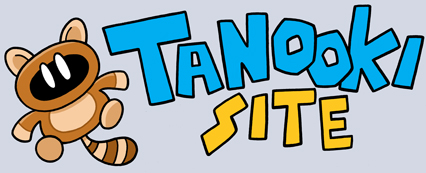Annotated Guide to the Simpsons Arcade Game
 Long known to jaded fans of the TV series as “the one good Simpsons game,” The Simpsons arcade game (officially titled just The Simpsons) was released by the Japanese firm Konami in March of 1991. It was the first-ever Simpsons-themed video game — predating the popular NES title Bart Vs. The Space Mutants by just a month — and was a product of the great Simpsons merchandising blitz that followed the show’s 1989 debut.
Long known to jaded fans of the TV series as “the one good Simpsons game,” The Simpsons arcade game (officially titled just The Simpsons) was released by the Japanese firm Konami in March of 1991. It was the first-ever Simpsons-themed video game — predating the popular NES title Bart Vs. The Space Mutants by just a month — and was a product of the great Simpsons merchandising blitz that followed the show’s 1989 debut.
The Simpsons arcade game is often remembered as being far more “authentic” to the world of the series than the many subsequent offerings. While later Simpsons games would take place in exotic fantasy worlds inhabited by strange new characters, the arcade game took place in an identifiably Springfieldian setting and was packed with explicit call-outs to memorable moments from the show.
What is less remembered today, however, is just how early in the series’ run the game was made. The game was released around the time the last few episodes from Season 2 were airing, and most of the references in the game are pulled exclusively from the first few episodes of Season 1. This fact can actually make the game appear quite dated to modern eyes, as many of the series’ most iconic characters and settings had not yet been introduced, and those that do appear are often portrayed based on the norms of Season 1 — the show’s most off-model and incongruous season.
General Information
 Bart wears a blue shirt in this game rather than his standard orange one. To this day, the FOX people have a policy of insisting Bart wear the “wrong” color shirt in official merchandise in order to make it easier to detect counterfeit Simpsons products.
Bart wears a blue shirt in this game rather than his standard orange one. To this day, the FOX people have a policy of insisting Bart wear the “wrong” color shirt in official merchandise in order to make it easier to detect counterfeit Simpsons products.
 When Bart flies into the frame after losing a life, he is dressed as Bartman. Bartman wouldn’t actually make an appearance in The Simpsons until the second-last episode of Season 2, but he existed as a merchandising character before this.
When Bart flies into the frame after losing a life, he is dressed as Bartman. Bartman wouldn’t actually make an appearance in The Simpsons until the second-last episode of Season 2, but he existed as a merchandising character before this.
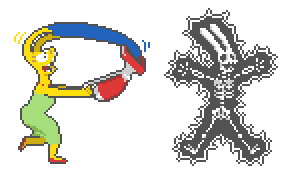 Whenever Marge’s vacuum gets caught on her beehive, and later, when enemies with the power to electrocute appear, Marge appears to have rabbit ears hidden under her hair. In the DVD commentary for episode 9F11, “Selma’s Choice,” Matt Groening mentions — incredibly enough — that it was originally his intention for Marge’s hair to conceal giant rabbit ears, but later scrapped the idea.
Whenever Marge’s vacuum gets caught on her beehive, and later, when enemies with the power to electrocute appear, Marge appears to have rabbit ears hidden under her hair. In the DVD commentary for episode 9F11, “Selma’s Choice,” Matt Groening mentions — incredibly enough — that it was originally his intention for Marge’s hair to conceal giant rabbit ears, but later scrapped the idea.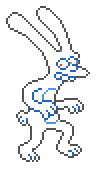
All of the level introduction sequences feature an odd-looking white rabbit character. This is Binky, the star of Matt Groening’s Life in Hell comic strip. Early Simpsons merchandise tends to contain a lot of cameos by Binky and friends.
Intro Sequence
The intro to the game is based on the rather crudely-animated Season 1 opening, which is rarely shown in syndication and contains several notable differences from the “standard” Simpsons opening seen from Season 2 onward.
“Homer’s scene,” where he drops the carbon rod, features a guy eating a sandwich with tongs in the background window, which would be replaced with Burns and Smithers in the post-Season 2 opening.
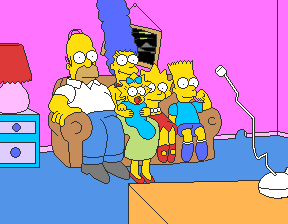 As in the Season 1 opening, the “couch gag” scene in the game is similarly missing the standard sailboat painting above the couch, the standing lamp to Bart’s left, and the more complicated end-table to Homer’s right. The Simpson family television is also light brown rather than the iconic light purple — as is the TV interface seen in other parts of the game.
As in the Season 1 opening, the “couch gag” scene in the game is similarly missing the standard sailboat painting above the couch, the standing lamp to Bart’s left, and the more complicated end-table to Homer’s right. The Simpson family television is also light brown rather than the iconic light purple — as is the TV interface seen in other parts of the game.
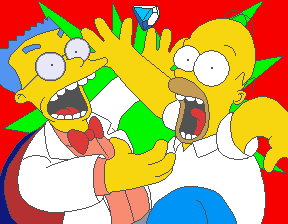 In the game, Smithers wears a white jacket, pink shirt, red bow tie, and slightly tinted glasses. This is how he dressed in a few early episodes, including his infamous appearance in episode 7503, “Homer’s Odyssey,” where he also had brown skin. The fact that Smithers is an oddly villainous character in this game can also be explained by how early in the show’s run it was made. Smithers had no real personality or identity in the first two seasons, and existed simply as Mr. Burns’ sidekick. The game took some creative liberties with that.
In the game, Smithers wears a white jacket, pink shirt, red bow tie, and slightly tinted glasses. This is how he dressed in a few early episodes, including his infamous appearance in episode 7503, “Homer’s Odyssey,” where he also had brown skin. The fact that Smithers is an oddly villainous character in this game can also be explained by how early in the show’s run it was made. Smithers had no real personality or identity in the first two seasons, and existed simply as Mr. Burns’ sidekick. The game took some creative liberties with that.
Stage 1: Downtown Springfield
Before we begin, a note for the unaware: Every Simpsons episode is given a “production code” that indicates when it was made. The first episode of Season 1 is 7G01, followed by 7G02, etc. Season 2 begins with 7F01, followed by 7F02. The game does not appear to be aware of any episodes later than 7F06. It’s worth noting that episodes were often aired out of the order in which they were produced.
 | The Rusty Barnacle can be seen. This is the restaurant where Homer danced with Princess Kashmir in episode 7510, “Homer’s Night Out.” |
 | The Noiseland video arcade appears. In episode 7G06, “Moaning Lisa,” this is where Homer learns to master the boxing game from a kid named Howard. Howard himself can be seen leaving the arcade at one point. |
 | The crude-looking bus stop sign is the same one Bart yanks away from waiting passengers in the Season 1 opening sequence. Principal Skinner is colored incorrectly here, but it is not a reference to any previous coloring scheme for the character, it's just a mistake. |
 | Crudely-drawn graffiti of Principal Skinner, probably a reference to the graffiti Bart draws in episode 7G02, "Bart the Genius." |
| The boss of Stage 1 is Professor Werner von Brawn, an academic-themed wrestler seen on TV in episode 7F06, "Bart the Daredevil." This is one of the game's rare references to something from Season 2. |
Stage 2: Krustyland
 | Stage 2 is called "Krustyland," but the sign at the entrance calls the amusement park where the level takes place "Springfield Amusement Park." The show would make no mention of Krustyland until Season 4 (1992), so the game was ahead of its time. |
 | There is a "Binky Show Hall" and from the doors featuring rabbit silhouettes emerge a one-eared rabbit character. This is Bongo, son of Binky, another character from Matt Groening's "Life in Hell" comic. The silhouette is something of a recurring trope from "Life in Hell" as well. |
Stage 3: Springfield Discount Cemetery
 | The zombies do coordinated dance moves, evoking the famous music video of Michael Jackson's "Thriller" (1983), which would have been a popular pop culture reference at the time. |
Stage 4: Moe’s Tavern
 | Moe's has posters on the wall depicting belly dancers who resemble Princess Kashmir from episode 7G10, "Homer's Night Out." There are also "Bart Tracy" posters, an obvious reference to Dick Tracy. |
 | Both Moe and Barney appear slightly off-model. Once again, this is because their sprites are based on their early Season 1 appearances, where Moe wore a pink apron and Barney had a green shirt and flesh-colored hair. |
 | There is a poster for "Carmen," the Russian opera Marge makes the family attend in episode 7G02, "Bart the Genius." |
 | More Princess Kashmir-types accompanied by Bleeding Gums Murphy, who was introduced in 7506, "Moaning Lisa," and not seen again until Season 6. |
 | Moe's arcade features cabinets for "Aliens" and "The Simpsons." Ridley Scott's "Aliens" was another franchise owned by Konami — the company that made this game — at the time. This is actually the second time the Simpsons arcade game contains an in-game reference to itself, the first was a poster in the window of the Noiseland Arcade in Stage 1. |
Stage 5: Springfield Butte
 | Stage 5 is full of Bigfoot creatures. They resemble how Homer looked when he was covered with mud and mistaken for Bigfoot in episode 7G09, "The Call of the Simpsons." |
 | Blinky the three-eyed fish leaps from the waterfall. This another rare reference to a Season 2 episode, as the iconic character didn't actually make an appearance on the show until episode 7F01, "Two Cars in Every Garage and Three Eyes on Every Fish." |
 | Sideshow Bob appears in a grass skirt outfit, bringing a healing item for the player. Through the course of Seasons 1 and 2, Bob only made one real appearance — episode 7G12, "Krusty Gets Busted," which was basically the introduction of the character. In that episode, we see Bob still working as Krusty's sidekick, and he wears the grass skirt outfit seen here. I guess it's possible this game is supposed to take place before Bob "goes bad." |
 | The boss of the level is the bear that befriends Maggie in 7G09, "The Call of the Simpsons." |
Stage 6: Dreamland
 | A ghostly image of Principal Skinner spray-painting a sign floats by. This is an image Bart sees in episode 7G02, "Bart the Genius," during a nightmare he has while taking a math test. The sign says "SANTA FE [graffiti] MILES," which makes more sense in the context of the original nightmare. |
 | The demon-Barts that appear here (and indeed, every time a character dies) do not appear in any actual episodes, but were a popular character used in early Simpsons merchandise, much like Bartman. |
Stage 7: Channel 6
 | Another Homer/Bigfoot from "The Call of the Simpsons." |
 | It's a jarring omission that Kent Brockman is not the anchorman in this scene. His first appearance was in the Season 2 episode "Bart vs. Thanksgiving" (7F07), which it's plausible to assume the game's producers would have seen. But then again, perhaps not. See analysis below. |
Parting Thoughts
Not a lot is known about the development of this game, nor when precisely in the show’s run it was produced. There are enough confused and inconsistent depictions of certain characters and settings to believe it was probably made by a team of developers who had seen a few episodes from Season 1 and given some draft material broadly outlining characters and ideas that would appear in Season 2. The absolute latest episode referenced is 7F06, “Bart the Daredevil,” (aired December 6, 1990, about three months before the game hit arcades) via Werner von Brawn, the boss of Stage 1. He is portrayed inconsistently enough with his appearance on the show to believe the design team probably did not see the episode he was in.
After its successful release in arcades, The Simpsons was ported to DOS, C64, and Amiga with varying degrees of competence. In 2012, it was made available on PlayStation Network and Xbox Live Arcade, but it has since been pulled. In 2009, Electronic Arts released a “spiritual sequel” of sorts for the iPhone entitled The Simpsons Arcade that used a very similar engine to the Konami game. Though it received generally favorable reviews, EA has since pulled it from the App Store as well.
